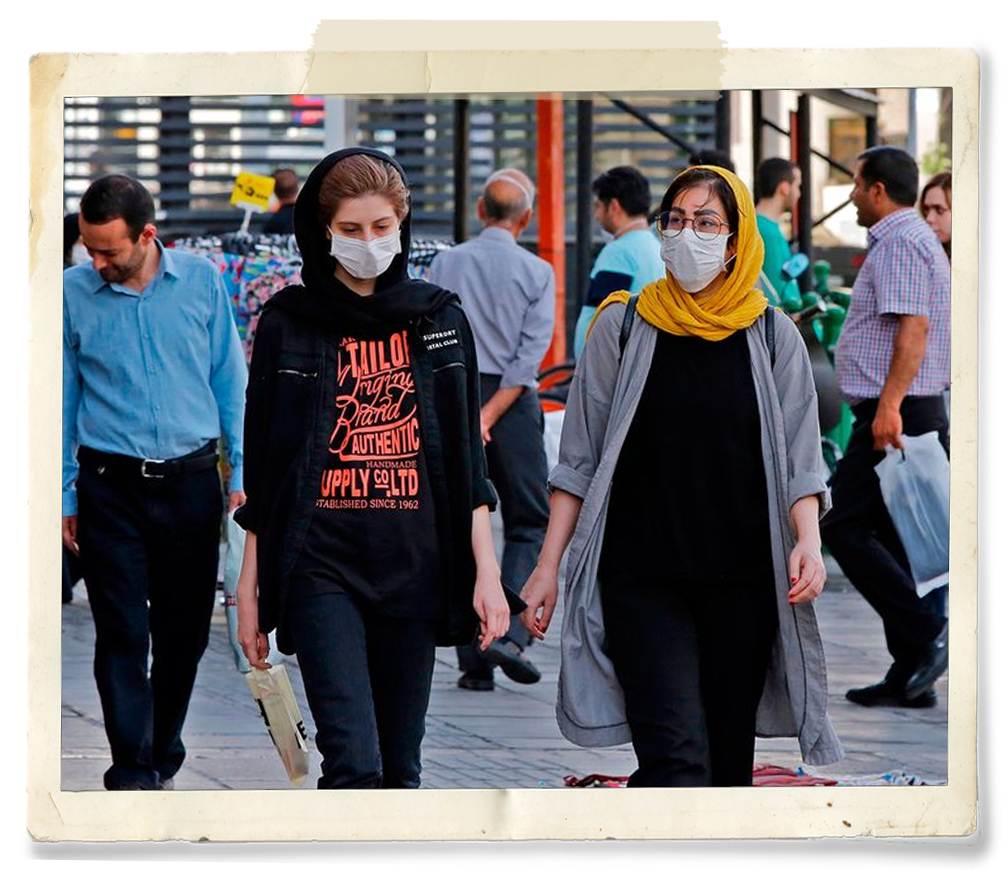The second wave
When economies reopened, there was bound to be a surge in coronavirus cases. But the countries were better prepared this time around, which helped them battle the virus with fewer casualties

AFP
Iranians walk along a street in capital Tehran on June 3, 2020, amid the novel coronavirus pandemic crisis.
Over the past months since the coronavirus has upended our lives, we have learnt much by way of scientific findings and human experience. But we certainly do not know what lies ahead, with regards to COVID-19. Do we have an upper hand when it comes to keeping the virus in check, or do we still have to live looking over our shoulder?
We have also learnt to move on with our lives and get the economy back on track. Thas has forced many countries to open up. This, despite the World Health Organisation (WHO) warning that a second wave was imminent if adequate safeguards were not taken and if countries rushed to open up the economy.
A second wave of infections hit mostly Europe, but the countries were better prepared, which helped keep the casualties down. But Britain struggled. The difference was they reacted faster but were beaten by a new coronavirus strain that spreads more quickly.
410,000
deaths by the end of the year in the US from the coronavirus has forecast in a study by the University of Washington’s health institute.
The prediction came true
In Europe, rising infection rates have raised concern in countries like Spain, France and Britain where strict lockdowns ended before the summer holiday seasons. Although the new cases are among younger people with few symptoms, experts fear it could creep back to affect the elderly.
Some countries — such as Albania, Bulgaria, Czech Republic, Montenegro, North Macedonia — have seen higher case numbers in August than they did earlier in the year. Most of these countries state that the rise in cases are just a reflection of the increased testing that is being done.
Although some doctors fear that hospitals may end up being overwhelmed by fresh COVID-19 cases, most are confident that this time around they are better prepared to tackle the virus.
But projections for some countries were far worse. The United States continued to reel from the high number of infections. The first wave is not over, so how can we talk about a second wave, some medical experts were quoted as saying.
A study by the University of Washington’s health institute has forecast that US deaths from the coronavirus will reach 410,000 by the end of the year, and deaths could soar to 3,000 per day in December. The forecast was not off the mark, as 337, 066 people died on December 24.
The simple task of wearing face masks can reduce deaths by 30 per cent. Then, why do people find it difficult to wear masks? In the US and other countries, there have been protests against wearing masks. There are many reasons for this - some find wearing a mask annoying, others are not convinced that they work in protecting against infection, while others feel there is a conspiracy involved. Confusing messages from many government officials in the early days of the virus also played in role in dissuading people from wearing masks. Many of these demonstrators have argued that by making rules compulsory, local authorities are infringing on their personal rights and freedoms.

Reuters
Adults supervise schoolchildren playing on the first day after New Zealand domestic regulations for COVID-19 were lifted, in Nelson, on June 9, 2020.
Beating the trend
Despite the second wave, some countries successfully beat the virus for 100 days, although there were a few cases after that. Closing the borders, strict policing, social distancing and wearing masks were some of the practices responsible for keeping the coronavirus at bay for such a long period. Thailand, Vietnam and New Zealand can be singled out for taking strong measures to combat the pandemic.Mystery in Pakistan
But the case of dipping numbers in Pakistan has confounded scientists, politicians and the people alike. Like most other countries, Pakistan too went into a lockdown at the peak of the pandemic. But it began opening its economy despite warnings. However, unlike in other countries, the cases went down, much to the delight and amazement of health experts.Health officials, medical practitioners and researchers believe that several environmental factors and preventive actions by the government helped diminish the intensity of the virus. Some experts feel that immunity against contagious diseases and a predominantly young population could be the two most reasonable scientific causes behind the low COVID-19 fatality rate in Pakistan.